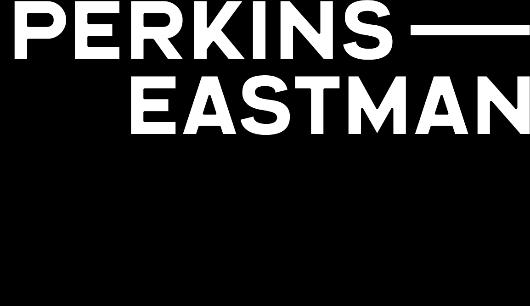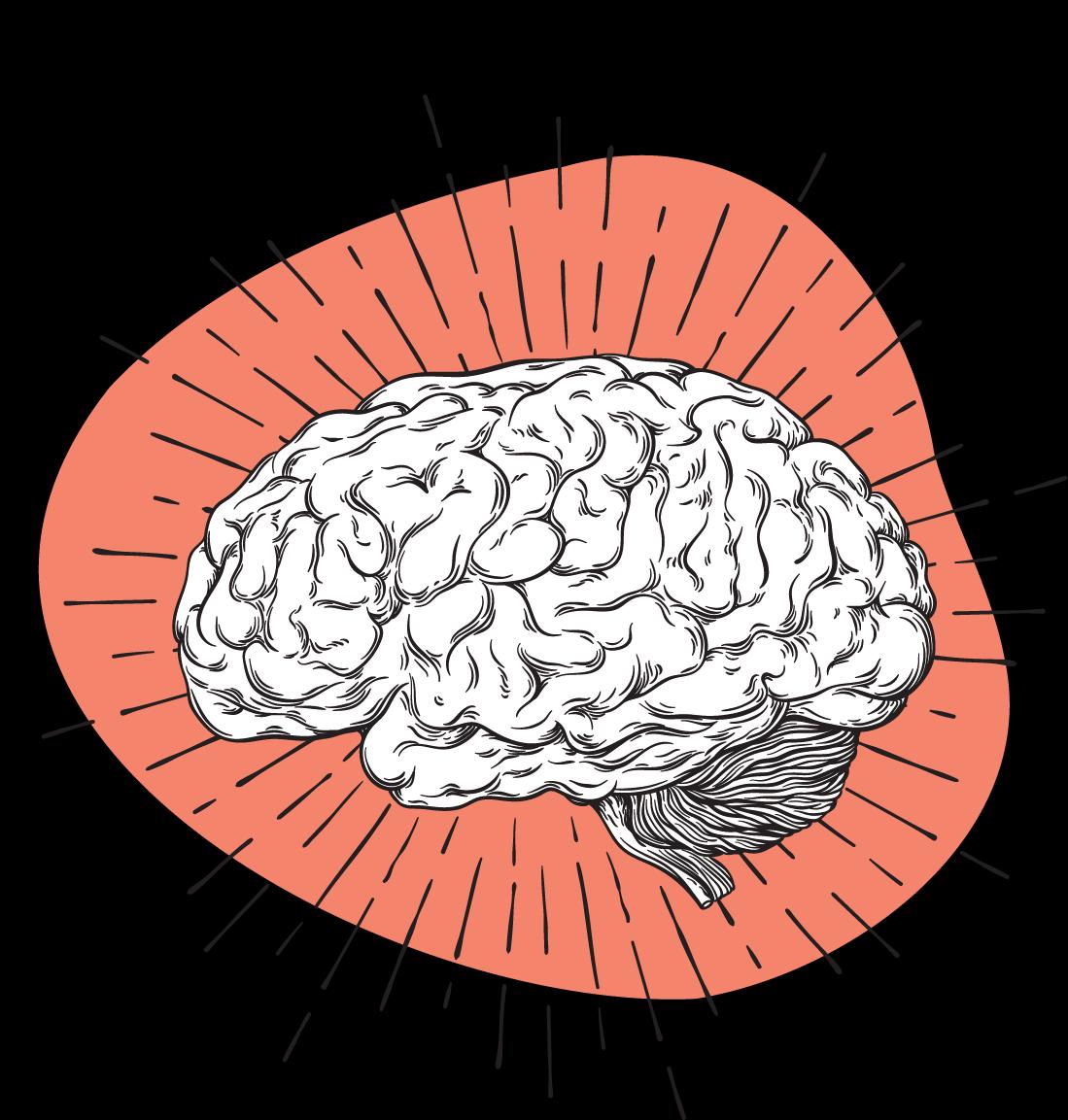
Workplace Inclusion











Perkins Eastman’s recently launched human-centered consulting team leverages research, strategy, and design thinking to drive and assess impact across diverse sectors and projects. We partner with project teams and clients to deliver evidence-based insights and tailored solutions that put human experience first.


Neurodiversity is the concept that variations in brain function and behavior are a natural and valuable part of human diversity

The term, coined by sociologist Judy Singer in the 1990s, challenges the idea that neurological differences are deficits, instead viewing them as part of normal variation

Neurodiversity includes a wide range of conditions such as autism, ADHD, dyslexia, dyspraxia, and more

15–20% of the world’s population exhibits some form of neurodivergence
15.5 million adults in the US (6%) currently have ADHD
2.21% of adults in the US have ASD (autism spectrum disorder)
Nearly 1 in 3 adults with ADHD report taking stimulant medication
Almost half of adults with ADHD have used telehealth for ADHD care
Transdiagnostic Framework
Paradigm Shift
Common Condition
Autism Spectrum
ADHD
Learning disability in written expression and reading
Learning disability in mathematics
Tourette’s
Others
Key Traits
Social communication differences, sensory sensitivities, preference for routine
Inattention, impulsivity, hyperactivity, executive function challenges
Difficulties with reading, writing, and spelling
Difficulties with understanding numbers and math
Involuntary tics and vocalizations
Dysgraphia, misophonia, stuttering, slow processing speed, etc.
Pattern recognition and complex problem-solving
Intense focus or special interests
Emotional intensity and empathy
Executive functioning challenges (organization, planning, taking initiative, multi-tasking)
Sensory sensitivity or seeking behaviors

SocialCommunication challenges
Creativity and unique perspectives
Detail-oriented observation and hyper-focusing
Adherence to routines and challenges with transitions/change in routine or behavior/though process




Many neurodivergent employees feel pressure to “mask” or hide their differences, leading to increased stress and reduced well-being
Unique strengths: creativity, attention to detail, innovative problem-solving, and diverse perspectives
Challenges include communication differences, sensory sensitivities, rigidity, and difficulties with traditional recruitment and retention processes

Drives innovation and creative problem-solving
Enhances team performance through diverse thinking styles
Improves organizational culture and employee satisfaction
Companies with inclusive practices see better retention and productivity

Traditional workplaces often prioritize open-plan offices, frequent meetings, and unstructured communication, which can be overwhelming for neurodivergent employees
Sensory overload (noise, lighting, crowds) and lack of quiet spaces can hinder productivity and well-being
Standard recruitment processes
(e.g., unstructured interviews) may disadvantage neurodivergent candidates
Many neurodivergent employees report feeling excluded or unsupported due to inflexible environments and lack of accommodations
Provide a range of workspaces
Offer flexible work arrangements + clear communication
Adapt recruitment processes
Foster a culture of acceptance
Neurodiversity recognizes + values natural variations in brain function
Scientific research supports a spectrum-based, inclusive approach
Neurodivergent individuals offer unique strengths but face workplace barriers
Inclusive design + practices benefit everyone + drive organizational success


32, he/him

Diagnoses: Autism Spectrum Disorder (ASD, diagnosed at 29)
Role: Senior Software Engineer at a tech agency (300 employees)
Strengths: Exceptional attention to detail; strong analytical skills
John works in a bright, noisy open-plan tech office with limited privacy. The culture emphasizes face-to-face meetings and casual social interaction.
Cultural Norms:
• Fast-paced, informal verbal communication as the default.
• Unspoken pressure to mask autistic traits to appear “professional.”
• Workplace culture that values multitasking and spontaneous collaboration.
• Assumption that presence equals social engagement or inclusion.
Sensory Triggers:
• Bright overhead lights and constant ambient noise.
• Frequent interruptions that disrupt focus and routine.
• Open-plan environment with little sensory regulation.
John
32, he/him

Sensory Overload
Communication
breakdown
Masking fatigue
Task disruption
Social disruption MISS MATCH
Quiet zones
Private spaces
Adjustable lighting
Noise control
Written agendas
Flexible scheduling
Task autonomy
Inclusive training
Respectful culture
42, she/her

Diagnoses: ADHD (diagnosed at 38), Autism Spectrum Disorder (ASD, diagnosed at 40), Perimenopause
Role: Senior Graphic Designer at a marketing agency (150 employees)
Strengths: Exceptional visual creativity, 98th percentile spatial reasoning, award-winning campaign designs.
Open-plan office with floor-to-ceiling glass partitions, fluorescent lighting, and ambient noise levels of 75 dB (similar to a vacuum cleaner).
Cultural Norms:
• Mandatory daily “brainstorming sessions” with rapid idea-sharing.
• Hot-desking policy with no assigned workspaces.
• Performance reviews prioritizing “team chemistry” and extroversion.
Sensory Triggers:
• Flickering LED panels above workstations.
• Strong coffee smells from an open-concept kitchen.
• Unpredictable fire alarms with high-pitched tones.
Sarah 42, she/her
Sensory Overload Menopause
Interaction Communication
Barriers Executive Function
Strain Masking & Burnout

Dimmable amber lighting
Soundproof focus pods
Fragrance-free zone
Personal cooling gear
Sensory sanctuary room
–
SYSTEMIC TRAINING INTERVENTIONS
• Neuroinclusion Workshops: 6-hour sessions for teams covering:
• Gender-neurodivergence intersectionality (simulations with strobe lights/overlapping audio).
• Menopause awareness training.
• Leadership Coaching: Certify managers in neurodiversityinformed leadership via accredited programs.
35, they/them

Diagnoses: Autism Spectrum Disorder (ASD), ADHD, Gender Dysphoria (transitioning non-binary to male)
Role: Data Scientist at a fintech startup (200 employees)
Strengths: Exceptional analytical skills (99th percentile pattern recognition), innovative problem-solving, and mastery of Python/R.
Open-plan office with floor-to-ceiling glass partitions, fluorescent lighting, and ambient noise levels of 75 dB (similar to a vacuum cleaner).
Cultural Norms:
• Mandatory “collaborative Fridays” with team-building exercises requiring physical touch (e.g., trust falls).
• Gender-neutral restrooms located 200+ feet from workstations, requiring passage through high-traffic areas.
• Performance reviews emphasizing “culture fit” and extroversion.
Sensory Triggers:
• Flickering LED panels in common areas.
• Strong cologne/perfume scents from colleagues.
• Open kitchen with frequent microwave beeps and avocado-toast preparation noises.
35, they/them
Intersectional Stigma
Sensory Overload Communication
Barriers
Executive Function
Strain
Masking Costs

Dimmable amber lighting
Natural-light workstation
Soundproof focus pods
Noise-masking equipment
Fragrance-free zone
Relocated kitchen
Personal cooling gear
Breathable uniforms
Sensory sanctuary room
Stim-supportive tools
We are fresh-water fish in salt water. Put us in fresh water and we are fine. Put us in salt water and we struggle to survive.


How we perceive and respond to our environment through our senses
How we express, interpret, and receive information
How we navigate and adapt to different activities, environments, or circumstances

Design Considerations

Provide variety
Create sensory zones
Encourage movement
Minimize distractions
spaces designed for low, medium, and high sensory stimulation
interactive furnishings movementfriendly areas tidy and uncluttered
diffused lighting, soundproofing

adjustable panels between workstations

interactive furnishings movementfriendly areas diffused lighting, soundproofing adjustable panels between workstations tidy and uncluttered spaces designed for low, medium, and high sensory stimulation


Incorporate visual wayfinding cues
Use multi-channel communications
Put it in writing
Make expectations crystal clear

Color-coded wayfinding graphics

Color-coded wayfinding graphics

Directional signage/maps

Multiple channels for company-wide communication s







Design Considerations

Be consistent
Include transition zones
Promote structure and routine
Provide start-up and shut-down checklists


Consistent setup at every station Designated transition zones
READ
Why do architects need to understand neurodiversity?
Neurodiversity As A Strengthening Point For Your Team And Our Society
The Concept of Neurodiversity Is Dividing the Autism Community
WATCH
Neurodiversity and Inclusive Design: Building for All Minds | Dea Luma | TEDxRITKosovo
Rebranding The Brain: Neurodiversity at Work | Dave Thompson | TEDxDanville
LISTEN
Designing Neuro-Inclusive Workplaces: With Kay Sargent
Neurodiversity & Design: How to Shape Spaces for All
ADHD Girls. (2022). Female neurodiversity [Ebook]. https://adhdgirls.co.uk/wp-content/uploads/2022/09/TCH22-CONF-Ebook-Female-neurodiversity-2.pdf
American Enterprise Institute. (2024). Embracing neurodiversity at work: Unleashing America’s largest untapped talent pool. https://aei.org/wp-content/uploads/2024/04/EmbracingNeurodiversity-at-Work-Unleashing-Americas-Largest-Untapped-Talent-Pool.pdf
Birkbeck University & Neurodiversity in Business. (2024). Neurodiversity in business and work report. Genius Within. https://geniuswithin.org/wp-content/uploads/2024/09/2024-25-09Neurodiversity-in-Business-and-Birbeck-University-Research.pdf
Birkbeck University & Neurodiversity in Business. (2024). Neurodiversity in business and work academic research. Neurodiversity in Business. https://www.neurodiversityinbusiness.org/wpcontent/uploads/2024-09-30-Neurodiversity-in-Business-and-Birbeck-University-Research.pdf
Brinzea, D. (2024). Neurodiversity in the workplace. University of New Hampshire Scholars' Repository. https://scholars.unh.edu/cgi/viewcontent.cgi?article=1127&context=ms_leadership
Brooks-Cleator, L., de Raaf, S., Fraser, K., Hutchison, N., & Sukhai, M. (2024). Neuroinclusive employment: Knowledge synthesis. Social Research and Demonstration Corporation. https://www.srdc.org/wp-content/uploads/2024/06/Sinneave-Knowledge-Synthesis-2024.pdf
City & Guilds. (2025, March 14). New research claims there is a lack of support for many neurodiverse employees. https://workplaceinsight.net/new-research-claims-there-is-a-lack-of-support-formany-neurodiverse-employees/ Comet. (2024, June 5). Embracing neurodiversity: Transforming office design. https://cometarch.com/embracing-neurodiversity-transforming-office-design/ de Raaf, S., Fraser, K., et al. (2023). Standardizing accommodations for neurodivergent employees: A review. (Referenced in Brooks-Cleator et al., 2024).
Doyle, N. (2020). Neurodiversity at work: A biopsychosocial model and the impact on working adults. British Medical Bulletin, 135(1), 108–125. https://doi.org/10.1093/bmb/ldaa021 Doyle, N. (2024). Embracing neurodiverse needs for an inclusive workplace. Ought: The Journal of Autistic Culture, 6(1), Article 9. https://scholarworks.gvsu.edu/ought/vol6/iss1/9/ Genius Within. (2024). 2024 neurodiversity in business and work report. https://geniuswithin.org/wp-content/uploads/2024/09/2024-25-09-Neurodiversity-in-Business-and-Birbeck-UniversityResearch.pdf
Hutchison, N. (2023). The impact of diagnosis requirements on workplace accommodations for neurodivergent employees. (Referenced in Brooks-Cleator et al., 2024).
Kapp, S. K., Gillespie-Lynch, K., Sherman, L. E., & Hutman, T. (2013). Deficit, difference, or both? Autism and neurodiversity. Developmental Psychology, 49(1), 59–71. https://doi.org/10.1037/a0028353
Remington, A., & Pellicano, E. (2019). Neurodiversity at work: A biopsychosocial model and the impact on workplace design. In Creative Differences: A Handbook for Embracing Neurodiversity in the Creative Industries (pp. 12–14). Universal Music UK. (Referenced in Brooks-Cleator et al., 2024).
Sang, K., et al. (2024). Neurodiversity and menstrual health at work. Heriot-Watt University. https://researchportal.hw.ac.uk/files/140967200/Neurodiversity_and_menstrual_health_at_work_Sang_et_al_2024.pdf
Sargent, K. (2025, March 18). Designing neuroinclusive workplaces: Advancing sensory processing and cognitive well-being in the built environment. Wiley. https://www.hok.com/news/202503/new-neuroinclusive-design-guide-by-hoks-kay-sargent-available/
Scott, M., Jacob, A., Hendrie, D., Parsons, R., Girdler, S., Falkmer, M., & Falkmer, T. (2017). Employers' perception of the costs and the benefits of hiring individuals with autism spectrum disorder in open employment in Australia. Journal of Autism and Developmental Disorders, 47, 3647–3657. https://doi.org/10.1007/s10803-017-3289-z
Sukhai, M. (2024). Functional impact and adjustments: Improving accommodations for neurodivergent workers. (Referenced in Brooks-Cleator et al., 2024).
Western Employee Well-being Office. (2023). Inclusive design in the workplace: Removing barriers for neurodivergent employees. (Referenced in Brooks-Cleator et al., 2024).
